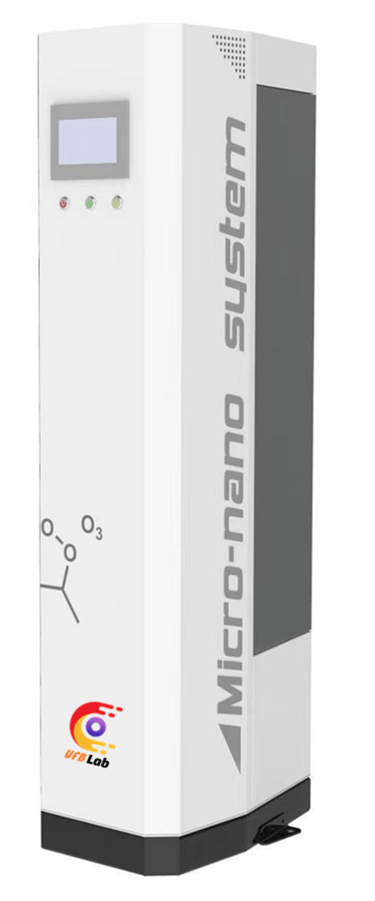Revolutionizing Clean-in-Place (CIP) in the Dairy Industry with Nanobubbles
UFBLab
7/12/20255 min read


Understanding Clean-in-Place (CIP) in Dairy Processing
Clean-in-Place (CIP) is a critical process in the dairy industry, designed to ensure that all equipment remains free from contaminants, thus maintaining the integrity of dairy products. The CIP process is paramount for achieving high hygiene standards, as dairy processing involves the handling of sensitive products that can be adversely affected by bacterial contamination or residue left on equipment surfaces. CIP systems are meticulously designed to clean equipment without the need for disassembly, thereby streamlining operations and minimizing downtime.
Within the CIP framework, the maintenance of cleanliness is essential to control potential food safety risks. Stubborn residues, such as proteins and fats, pose significant challenges, especially if allowed to build up over time. Moreover, biofilm formation can create an environment conducive to further contamination, complicating the cleaning process. Mineral scaling, often a result of hard water, adds to the difficulty of equipment cleaning, further emphasizing the importance of an effective CIP strategy.
The traditional CIP process typically comprises several key steps: pre-rinse, caustic wash, acid wash, and sanitization, with rinses required between each phase to ensure the effective removal of contaminants. The pre-rinse phase involves flushing the equipment with water to remove loose soil, while the caustic wash utilizes alkaline solutions to dissolve and detach organic residues. Subsequent acid washes help neutralize any remaining alkaline substances and target mineral deposits. Finally, a sanitization step is vital for eliminating remaining microorganisms, ensuring that the equipment is ready for production.
It is important to note that each step in the CIP process has implications regarding resource usage, specifically in terms of water, energy, and chemical consumption. Therefore, optimizing these aspects can lead to significant improvements in efficiency and sustainability within dairy processing operations. The advent of advanced cleaning technologies, such as the integration of nanobubbles, may further enhance the effectiveness of CIP by addressing these challenges more efficiently.
The Limitations of Traditional Cleaning Methods
Traditional Clean-in-Place (CIP) methods in the dairy industry have been foundational for maintaining hygiene and ensuring product safety. However, these methods come with significant limitations that affect both operational efficiency and environmental sustainability. One of the primary concerns is the excessive use of water. Conventional CIP processes can require a substantial amount of water to thoroughly clean equipment, leading to increased operational costs and wastage of this precious resource. Furthermore, the environmental impact of these high water consumption levels cannot be overstated, particularly in regions where water scarcity is an issue.
In addition to water wastage, traditional cleaning methods rely heavily on a range of chemicals, which poses further environmental challenges. The manufacturing and disposal of these cleaning agents contribute to chemical pollution, and their residues are often not fully removed from processing equipment. This can lead to potential contamination of dairy products, directly impacting food safety. Moreover, the energy consumption associated with heating water and powering cleaning processes is considerably high, which further escalates operational costs and contributes to a higher carbon footprint.
Another significant limitation of traditional CIP methods is their inability to effectively remove stubborn residues such as biofilms and mineral deposits. Biofilms can form on equipment surfaces, providing a protective barrier for bacteria, making them challenging to eradicate. This ineffeciency can compromise food safety and quality, putting dairy processors at risk of product recalls and reputational damage. Additionally, the incomplete removal of mineral deposits can lead to equipment deterioration, increasing maintenance costs and downtime. These limitations highlight the pressing need for innovative cleaning solutions that not only enhance efficiency but also align with sustainability goals within the dairy industry.
Introduction to Nanobubble Technology
Nanobubble technology represents a transformative advancement in cleaning protocols, particularly within the dairy industry. These nanobubbles are extraordinarily small, typically measuring between 100 to 200 nanometers in diameter. Their minuscule size enables them to penetrate surfaces at a level that conventional cleaning techniques cannot achieve. As a result, they can access crevices and pores that often harbor contaminants, thus improving the overall hygiene standards in dairy processing facilities.
One of the most remarkable properties of nanobubbles is their capacity to disrupt biofilm structures. Biofilms are aggregates of microorganisms that form a protective layer over surfaces, making it challenging for traditional cleaning agents to penetrate and eliminate these contaminants. By generating millions of these tiny bubbles in a cleaning solution, the nanobubbles create a high degree of agitation and turbulence, which physically breaks down and removes the biofilm without relying heavily on harsh chemicals.
In addition to their physical disruption capabilities, nanobubbles exhibit significant chemical properties, such as the ability to carry and release cleaning agents more effectively than conventional methods. This attribute allows for a reduction in the volume of chemicals required during the Clean-in-Place (CIP) process, thereby minimizing environmental impact and enhancing safety for workers. Furthermore, the efficiency of nanobubbles reduces cleaning cycles and water consumption, contributing to more sustainable operational practices in dairy production.
By integrating nanobubble technology into CIP systems, dairy industry professionals can achieve elevated cleanliness levels while optimizing resource usage. As the push for more efficient and eco-friendly cleaning solutions intensifies, the adoption of nanobubble technology is set to revolutionize the standards of cleanliness and operational effectiveness in dairy processing.
The Benefits of Implementing Nanobubble Technology in CIP
The incorporation of nanobubble technology in the Clean-in-Place (CIP) system has proven to revolutionize cleaning processes in the dairy industry. One of the primary advantages of nanobubbles is their remarkable cleaning efficiency. Unlike conventional cleaning agents, nanobubbles are smaller than one micron in diameter, allowing them to penetrate and adhere to surfaces more effectively. This enhanced ability to reach even the tiniest crevices leads to a significantly improved removal of residues such as fats, proteins, and biofilms commonly found in dairy processing equipment.
Moreover, the implementation of nanobubble technology contributes to substantial reductions in chemical usage during the CIP process. Traditional cleaning methods often rely on high concentrations of chemical cleaners, which can be harmful to both the environment and the product quality. Nanobubbles facilitate cleaning through physical interactions rather than solely depend on chemical reactions. This reduction in chemical dependency not only minimizes environmental impact but also lowers operational costs, making it a financially sound decision for dairy processors.
In addition to enhanced efficiency and reduced chemical usage, the integration of nanobubbles fosters safer operational practices. Since nanobubble technology can achieve effective cleaning at lower concentrations of cleaning agents, it mitigates risks associated with handling aggressive chemicals. This is particularly important in dairy environments, where worker safety must be prioritized. For instance, a dairy facility that implemented nanobubble technology reported a 30% decrease in chemical exposure incidents among employees, showcasing the direct benefits to workforce safety.
Several case studies highlighting the successful applications of nanobubble technology in CIP underscore its effectiveness. One prominent example involves a large-scale dairy processing plant that experienced a 50% improvement in cleaning cycle times and a notable decrease in water usage, appealing to both economic and sustainability goals. Such real-world impacts of adopting nanobubble technology illustrate its potential to not only enhance cleaning but also support the dairy industry's shift towards greener practices.
Innovation By Research
Shenton Way, Singapore
© 2024. C2C Technology Singapore Pte Ltd All rights reserved.
Company
RELATED Products
INDUSTRY NEWS
